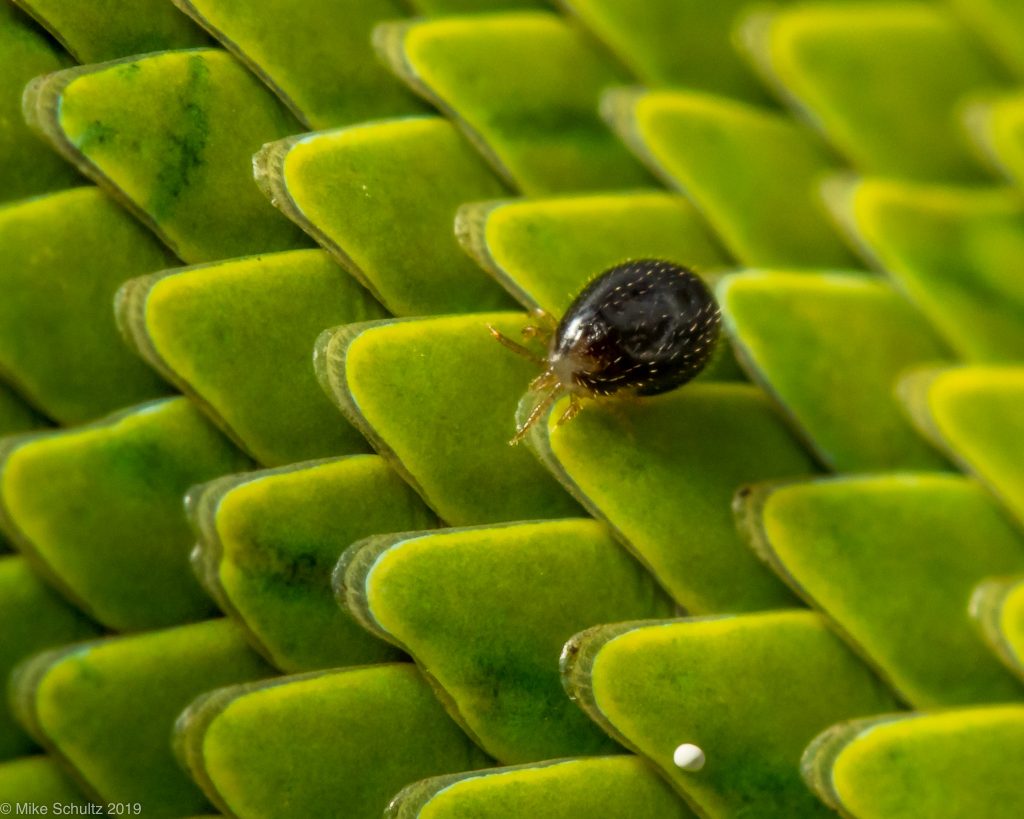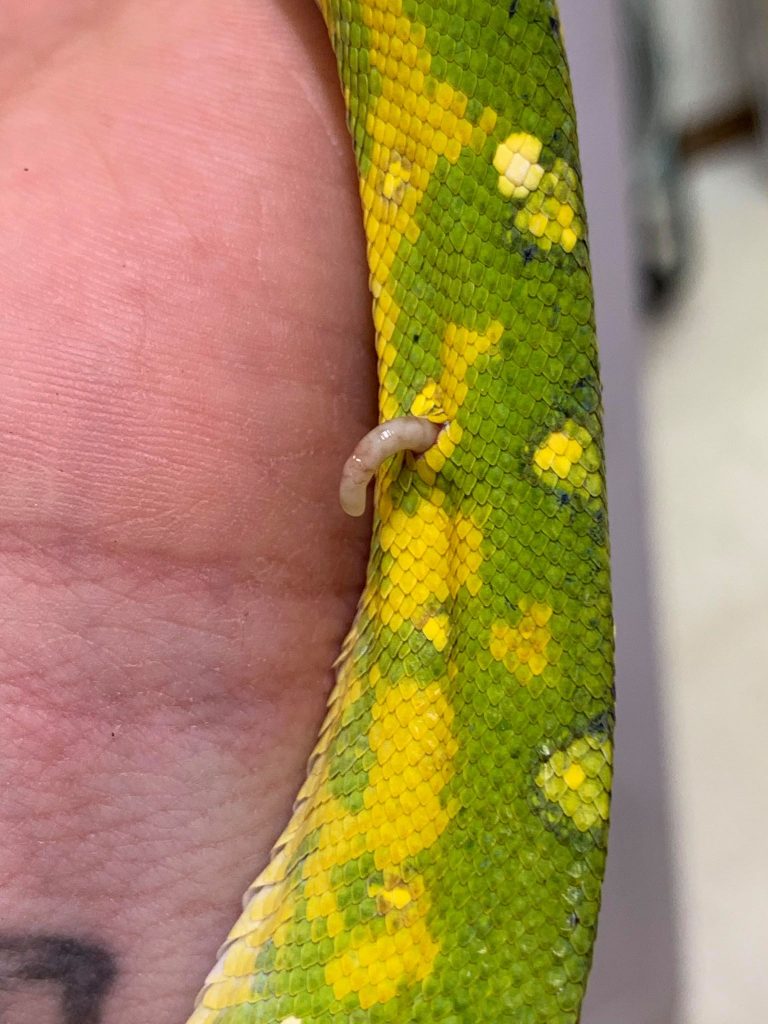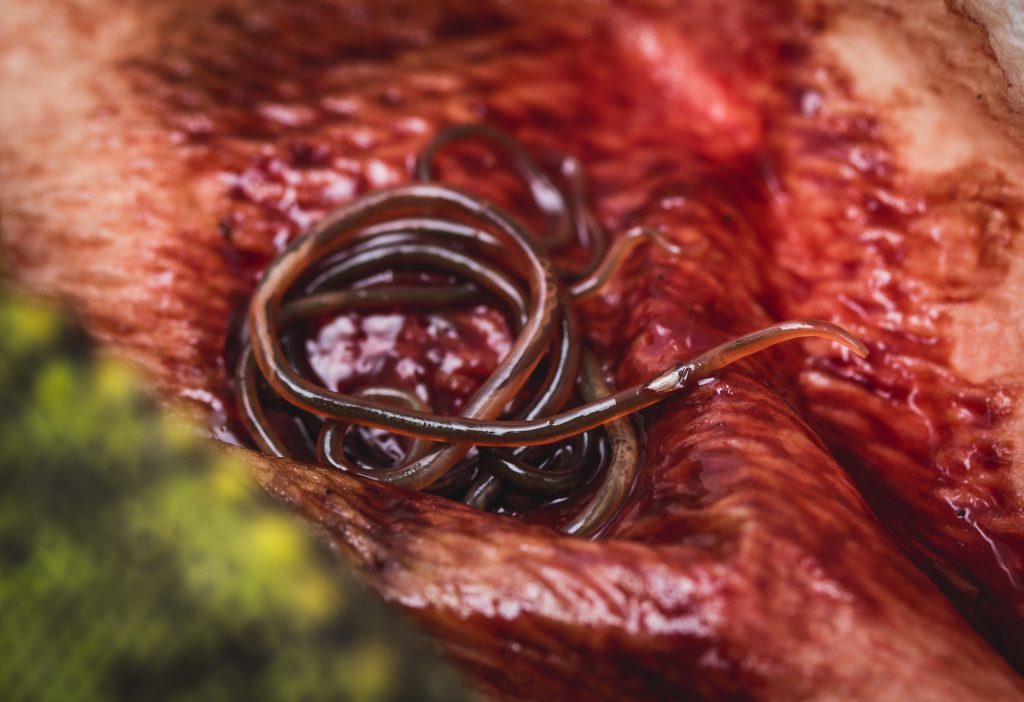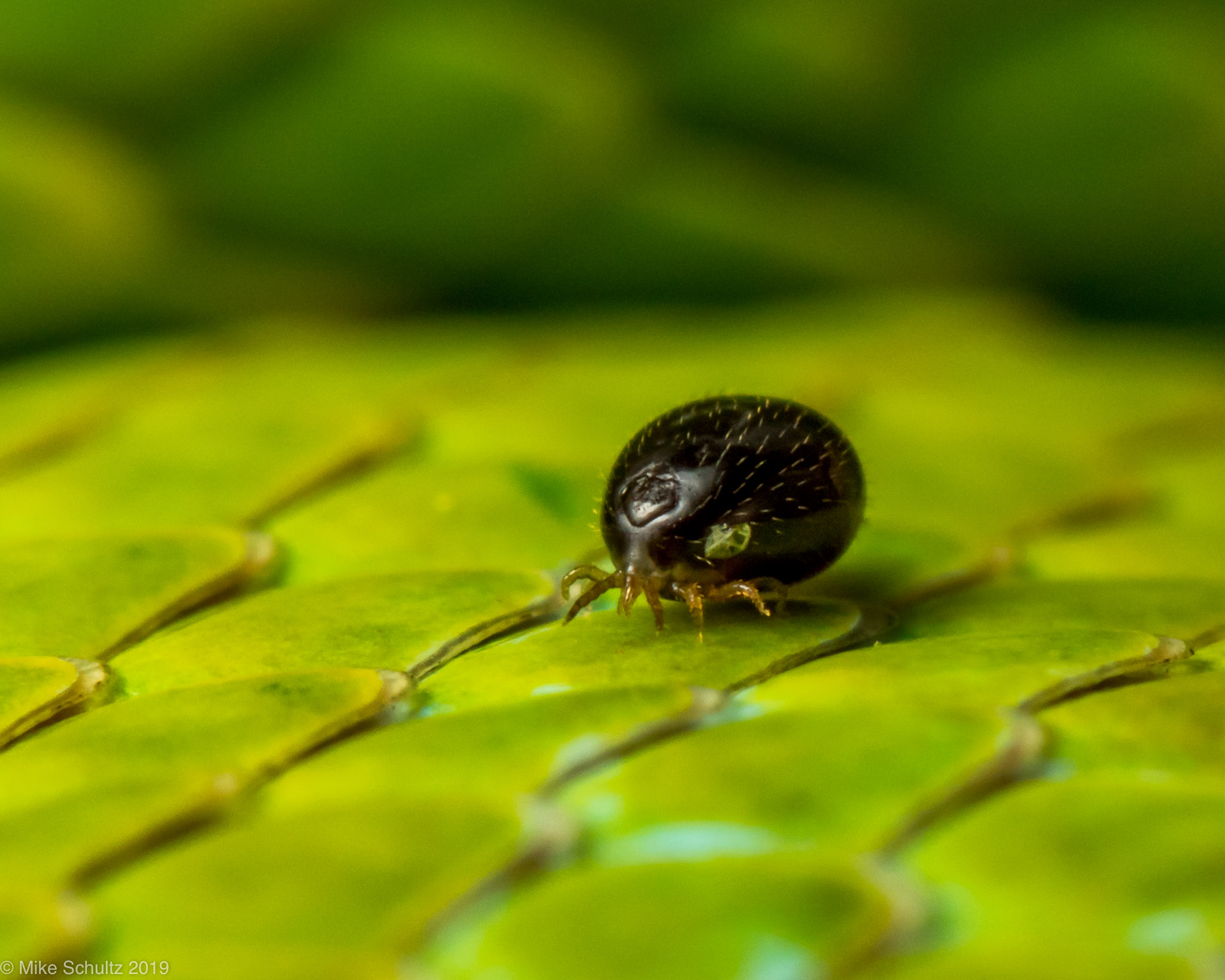As we do sell imported and wild caught animals here, one question I get very frequently is whether the animal in question has been treated for parasites. Or, how should that customer go about treating the animal themselves.
These are fairly simple questions, but the answer is complex and may or may not be the same depending on the individual circumstances – so here I’ll try to explain my reasoning on why we do things a certain way. I am not a veterinarian and this is simply my opinion on the best way to do things, based on many years of dealing with wild caught critters. Your mileage may vary and your opinion may vary based on different experiences, but this is what I have found to be the most effective way to approach this issue.
So first off, what does “treat for parasites” even mean? When animals come in from the wild, they will pretty much all have either an external parasite of some sort (such as ticks or snake mites) and/or internal parasites (such as worms that live in the digestive tract). This is pretty much unavoidable and true in almost every case, unless an animal was recently hatched/born and somehow collected before it had a chance to contract the usual bugs that exist in their natural habitat. Which parasite you will have to deal with depends on the species of animal and which part of the world that animal comes from. For example, mites are a common tagalong external parasite when dealing with snakes (and some lizards) from southeast Asia / Indonesia, as well as South America. Whereas snakes and lizards from West Africa are devoid of mites, but they do occasionally come in with reptile-specific ticks.
Since external parasites are highly transferrable between animals, they are the very first thing we worry about when we open up a box or a crate of wild caught animals. (In fact, we treat ALL incoming animals for external parasites – whether captive bred or wild caught, as, I am sure you are aware, mites are unfortunately quite common in poorly quarantined captive collections). Treating for external parasites is quick and easy – we use and recommend a diluted Nix solution (Click here to buy, amazon affiliate link) for treating mites and ticks. I will be writing a future article on how to use Nix to treat for mites – keep an eye out for it. Nix is very safe and very effective and we have used it for over 20 years.

We treat all incoming animals with Nix to kill any mites or ticks that they may be harboring, first thing, before there is any chance that they could spread and infest other animals. This is very important – a mite or tick infested animal, left untreated, can cause an entire collection to become infested within days, or even hours depending on the extent. I like to tell everyone to ALWAYS treat every incoming snake for mites, whether you see them or not, just to be safe. Sometimes a second treatment may be necessary so be sure to quarantine your new pickup from other animals, even after treatment. I like to treat again after 7 days to interrupt the life cycle of any stalwart mites that may have somehow survived the initial treatment. Nix will kill ticks as well, but their nasty little tick corpses will need to be manually removed afterwards.
So the immediately contagious threat – external parasites – has been taken care of. Now what? I should take my snake to the vet and get medicine to kill off the internal parasites, right? Well, this is a topic of some debate but I have found over the years that it’s best not to do this right away. And for some species, it’s best not to do it at all in many cases.
Think about this – we just imported an animal from halfway around the world, intending to establish that animal in captivity now. It’s acclimating and getting used to its new home after being brought into the country, held in temporary import / quarantine cages, and eventually sold to a keeper who will then get that animal fully established in its final full time cage / tank / what have you. This can be very stressful and the animal may take weeks or sometimes even months to fully settle in and begin to thrive again. During this time period, it is vital to your animal’s survival that it experience only the very most necessary stressors – after the initial sale and shipment to you, it’s best to leave that animal alone and give it time to settle in and relax. This is why we do not immediately treat our animals for internal parasites, only external.

Right now, immediately before letting your new reptile start settling in, is an awful time to take it to a vet to be poked and prodded, examined, and then pumped full of anti-parasite chemicals that will wipe out its entire gut biome. This can be the recipe for a system wide crash, especially in smaller or more sensitive animals. This creature has been, so far, living its entire life with these parasites, so relax – it can go a few weeks or months to establish itself in its new environment before we worry about that. Your animal should be in strict quarantine away from any of your other creatures at this point, so cross-contamination of those internal parasites is not something to worry about.
Some people will say, “ah, but Mike, aren’t parasites worse in captivity than in the wild? Won’t the stress / closer quarters / etc cause a “bloom” or something?”
This is certainly a factor to consider, and also a reason why I mentioned above that the answer is not necessarily an easy one. In the wild, these animals are free to move around more or less wherever they want, where in captivity obviously they are confined to a specific area. This means that they are in much closer contact with their waste, which can lead to a cycle of “re-infecting” themselves – as contact with waste is one of the major methods that internal parasites spread to other animals. It is important to keep an eye on your enclosure and to keep it as sterile as possible during this acclimation process. We want our animal to relax and settle in long enough to treat for whatever bugs they have, without the problem getting worse in that time period. Clean up any waste that the animal produces as soon as possible to avoid unnecessarily boosting that parasite load.
Now, with some animals, I personally believe treatment is unnecessarily riskier than NOT treating. Sensitive little geckos (Uroplatus especially), small lizards, and the like are prone to dying during parasite treatment so I usually recommend people just skip it for them. It’s less risky to just keep them as is, than to pump chemicals into these delicate creatures. Yes, this means you will never be able to introduce them to your captive animals. I believe it’s safer for everything involved to just keep separate colonies of wild caught and captive bred leaf tails, small agamas, etc etc. The good news is that any baby geckos that you produce, will be parasite free – as they do not pass from mother to offspring. I tell people to set up their wild Leaf Tail geckos, breed them, and then use those offspring to add to their captive collection.

So how long should you wait to treat the animals that you do decide to administer meds to? The major factor I consider, along with time in the country, is how well that animal is feeding. For example, I keep a lot of Emerald Tree Boas myself, and some of them are wild caught imports. I treat for external parasites immediately upon arrival, then set them up in quarantine. Sometimes they will begin feeding immediately – in which case I’ll give them 2 or 3 meals over the course of around 6 weeks, and then treat for internal parasites. However, sometimes they take months to settle in and start eating. When this happens, I just leave them alone in quarantine, with as little stress as possible, and wait. Eventually they will begin feeding, and after a few meals in a row I’ll start the parasite treatment process.
Treating for internal parasites is fairly simple, usually. For me it’s as easy as a quick Vet appointment to examine the animal, get a weight, send off a fecal sample to the lab, and prescribe a couple broad spectrum parasite meds. Call your vet ahead of time to see how they prefer their fecal samples – mine prefers a fresh sample, under a week old, that has been kept in a sealed plastic bag and refrigerated. My Veterinarian will usually then prescribe Panacur (Fenbendazole) and Flagyl (Metronidazole) to use in the meantime while waiting for the fecal lab results. These are orally administered medications that are pretty safe to use as long as directions are followed. Flagyl can be toxic in high doses, so obviously pay attention to the amount your veterinarian prescribes. Usually treatment consists of 3-4 doses of each medication over the course of a couple weeks or so. This is a broad description intended to give you a general idea of what treatment is like – always follow your Veterinarian’s exact directions when administering medication to your pets.
One thing to consider is that these medications do have the negative side affect of also depleting the natural, beneficial microorganisms living in your pet’s digestive tract. I always feed very small meals after treatment, spread out a little longer apart than usual, to give that gut biome a chance to bounce back before being possibly overwhelmed with your normal feeding regimen.
Now by the time you’ve finished administering the meds, your Vet should have the results back from the fecal test. Should something particularly horrific show up in the labs, you may need to administer more treatments – but I have personally never had anything show up that the initial meds didn’t already take care of.
Now, after that parasite treatment regimen and your lengthy quarantine period, you should be pretty much good to go. It can’t hurt bringing another fecal sample in after another few months to double check that your meds did the trick before introducing that fully quarantined, fully treated animal to your established collection, but I’m especially paranoid about these things.
Hopefully my insight helps you make an informed decision about parasite treatment. Please regard this as general advice based on my hands on experience over years of dealing with wild caught animals, and consult with an experienced reptile/exotics vet when administering any medication or medical procedures.

